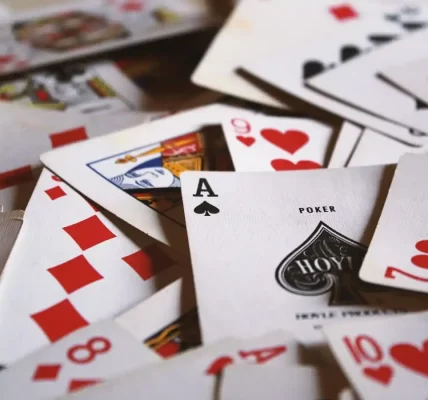Ever wonder why some Rummy games feel like pure luck while others seem to bend to your strategy? Well, it all starts with the shuffle. That quick riffle or overhand mix isn’t just for show—it’s the invisible hand shaping every game. Let’s dive into how randomization works (or doesn’t) and why it matters more than you think.
Why Shuffling Isn’t Just “Mixing Cards”
Shuffling is the backbone of fairness in Rummy. A poorly shuffled deck can lead to predictable patterns—like getting the same sequences repeatedly or, worse, your opponent guessing your hand. Here’s the deal: true randomization breaks these patterns, making the game a test of skill, not just chance.
The Math Behind the Mix
A standard deck has 52 cards, which means there are 52 factorial (that’s 52×51×50×…×1) possible arrangements. That’s more than the number of atoms on Earth. But here’s the catch: most shuffles don’t come close to reaching all those possibilities. In fact, it takes about 7 riffle shuffles to properly randomize a deck. Fewer than that, and patterns linger.
Common Shuffling Methods—And Their Flaws
Not all shuffles are created equal. Some methods, like the overhand shuffle, might feel intuitive but barely scratch the surface of randomization. Others, like the riffle shuffle, do a better job—but only if done right.
1. The Overhand Shuffle
You know the one—grabbing small chunks from the top and dropping them into a new pile. It’s quick, but studies show it takes over 10,000 repetitions to fully randomize a deck. Most players do it maybe 10 times. That means clumps of cards stay together, skewing the game.
2. The Riffle Shuffle
The gold standard. Splitting the deck and interleaving cards creates more entropy. But—and this is a big but—if the shuffle is sloppy (uneven splits or clumped drops), it’s only marginally better than the overhand.
3. The Wash (or Casino Shuffle)
Ever seen dealers spread cards face-down and swirl them around? It’s chaotic, sure, but surprisingly effective. The downside? It’s time-consuming and impractical for casual play.
How Shuffling Impacts Rummy Strategy
If the deck isn’t truly random, players can—consciously or not—exploit patterns. Here’s how:
- Sequences cluster: Poor shuffling means cards from the same run (like 5-6-7 of Hearts) might stay close, making melds easier for some players.
- High-value cards stick together: Ever notice someone getting multiple Jokers or Aces in a row? That’s not luck—that’s bad shuffling.
- Discard predictability: If cards aren’t mixed well, the discard pile becomes a treasure trove of hints.
The Human Factor: Why We’re Bad at Shuffling
Here’s the funny thing: humans suck at randomness. We instinctively create order, even when trying not to. That’s why:
- We subconsciously avoid splitting pairs.
- We tend to shuffle the same way every time (leading to repetitive patterns).
- We underestimate how many shuffles it really takes.
Honestly, unless you’re counting your shuffles like a blackjack dealer, you’re probably not randomizing enough.
Digital Rummy: Does Software Do It Better?
Online Rummy platforms use pseudo-random number generators (PRNGs) to shuffle. These algorithms simulate randomness—but they’re not perfect. PRNGs rely on seed values (like the time of day), meaning if you knew the seed, you could predict the shuffle. That said, reputable sites use cryptographic hashing to prevent this.
The Upside of Digital Shuffling
- Instant, near-perfect randomization.
- No human biases or physical errors.
- Auditable algorithms (in regulated platforms).
The Downside?
Players can’t “feel” the shuffle, which removes some tactile trust. And poorly coded apps? They might as well be dealing from the top.
Practical Tips for Better Shuffling
Want to level the playing field? Try these:
- Combine methods: Riffle + overhand + cut = harder to predict.
- Shuffle more: Aim for at least 7 riffles or 1 minute of overhand.
- Cut the deck: A simple cut after shuffling breaks up residual order.
- Rotate shufflers: Different people shuffle differently—mix it up.
The Bigger Picture: Why Randomness Matters
Rummy isn’t just about the cards you’re dealt—it’s about how they’re dealt. A truly random shuffle turns the game into a battle of wits, not a roll of the dice. And isn’t that what makes it fun?
Next time you shuffle, remember: you’re not just mixing cards. You’re setting the stage for every bluff, every meld, every comeback. Now that’s power.






